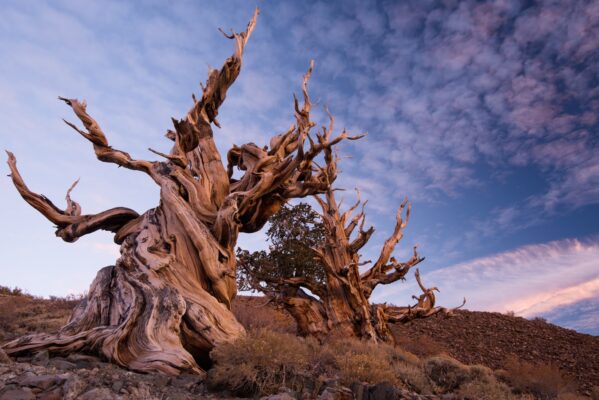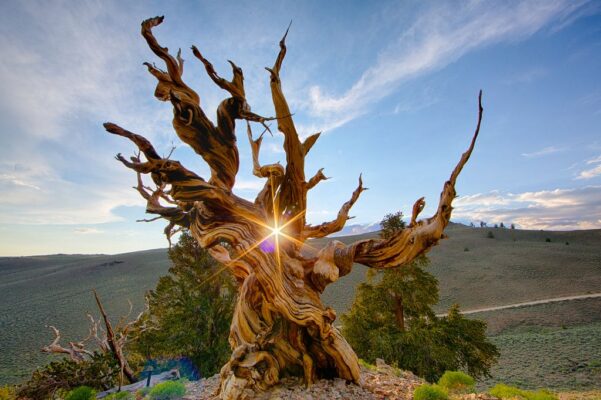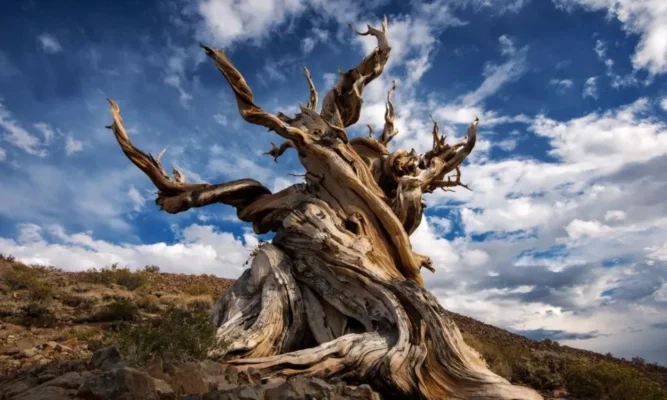Where Is the Oldest Tree in the World? A Look at Its History is not just a simple question; it’s an exploration of time, resilience, and the natural world. This query draws us into the rich tapestry of history, challenging our understanding of life on Earth. Discovering the location and unique qualities of the oldest tree invites us to reflect on its survival across centuries, offering insights into environmental changes and human impact over time.

The Ancient Scholar: Methuselah’s Journey
The oldest known living non-clonal tree is a bristlecone pine named Methuselah, located in the White Mountains of California. This extraordinary tree has garnered significant attention not only for its age but also for the remarkable environment it inhabits.
Understanding Bristlecone Pines
Bristlecone pines are some of the longest-living trees on the planet. They thrive in harsh conditions, often found in rocky soil at high altitudes. Their twisted trunks and gnarled branches tell stories etched by time and the elements.
These trees have adapted to survive in extreme climates, withstanding severe winds and cold temperatures that would deter most other species. Their slow growth rate and ability to endure drought conditions contribute to their longevity, making them a living testament to resilience.
Historical Context of Methuselah
Methuselah has been dated to be nearly five thousand years old, meaning it sprouted around the time when humans were just beginning to write history. This ancient tree has survived significant climatic changes, including ice ages and warming periods, allowing us to glimpse into prehistoric times through its rings.
Scientists believe that the study of Methuselah can provide insight into both past climates and future climate change trends. Through dendrochronology (the study of tree rings), researchers can decode the environmental conditions that existed during the tree’s lifespan, revealing patterns that inform current ecological studies.
The Quest for the Location
The exact location of Methuselah has been kept a closely guarded secret. This decision was made to protect the tree from potential vandalism or damage from visitors. This measure emphasizes the importance of conservation and respect for our natural heritage.
Visiting the general area of the White Mountains allows one to appreciate the stunning landscape that nurtures such ancient life forms. Although we cannot directly visit Methuselah without specific guidance, the surrounding environment is equally captivating, featuring towering peaks and breathtaking vistas.
Cultural Significance of Ancient Trees
In cultures around the globe, ancient trees symbolize wisdom, endurance, and connection to ancestry. Methuselah stands as a powerful embodiment of these values, inviting us to contemplate our place in the ever-evolving narrative of life on Earth.
The lore surrounding Methuselah has inspired artists, writers, and nature lovers alike. By connecting with this venerable being, people find a sense of continuity and inspiration, reminding us that there is beauty in both the transient and the eternal.
Clonal Trees: The Hidden Giants of Ancient Forests
While Methuselah represents an individual tree, clonal trees present another fascinating facet of longevity. These trees, which reproduce vegetatively, can live for thousands of years, making it difficult to pinpoint a singular “oldest” specimen.

The Pando Colony
One of the most notable examples of a clonal organism is the Pando colony, a grove of quaking aspen trees in Utah. While each tree appears separate above ground, they share a single root system, essentially forming one of the largest living organisms on the planet.
Pando is estimated to be around 80,000 years old, showcasing the power of resilience and adaptation. This expansive network highlights the importance of interconnectedness within ecosystems, illustrating how life can thrive under shared resources and unique genetic adaptations.
Ecology of Clonal Colonies
Clonal trees play a crucial role in their ecosystems, providing habitat and resources for various wildlife. The Pando colony supports a diverse range of fauna, each contributing to the intricate balance of life within that environment.
By studying these clonal organisms, scientists gain insights into forest ecology, species interactions, and the impacts of climate change. The longevity of colonies like Pando offers a compelling glimpse into the ecosystem’s health and stability over millennia.
The Challenges of Preservation
Despite their age and significance, clonal colonies face numerous threats from climate change, disease, and human activities. Maintaining the integrity of these ancient groves is essential for biodiversity and environmental health.
Conservation efforts are underway to protect such vital habitats, emphasizing the need for awareness and action in safeguarding these ancient ecosystems. Our stewardship over these spaces will ultimately determine the fate of future generations—both of trees and the myriad creatures that rely on them.
Personal Reflections on Clonal Longevity
Witnessing the beauty of such ancient organisms evokes deep contemplation about our own lifespan and legacy. The resilience of clonal trees serves as a poignant reminder of our interconnectedness with nature. Just as these trees adapt and thrive over centuries, we too must find ways to coexist harmoniously with the environment, ensuring a sustainable future.
Environmental Impact on Ancient Trees
Ancient trees like Methuselah and Pando are sensitive indicators of environmental health. As such, they bear witness to the effects of climate change, pollution, and habitat destruction. Understanding the challenges they face allows us to recognize the broader implications for our planet.

Climate Change and Its Consequences
Rising temperatures, changing precipitation patterns, and increased frequency of extreme weather events threaten the delicate balance that sustains these ancient trees. For instance, prolonged droughts can weaken their defenses against pests and diseases, leading to higher mortality rates.
Moreover, as climate zones shift, the habitats that once supported these venerable organisms may no longer be suitable. This poses a grave risk to their survival, highlighting the urgent need for comprehensive strategies addressing climate change.
Human Influence and Conservation Efforts
Human activities—including deforestation, urbanization, and pollution—directly impact the ecosystems where ancient trees reside. Protecting these environments requires collaboration among policymakers, conservationists, and local communities to implement effective measures.
Organizations dedicated to preserving ancient forests work tirelessly to raise awareness, promote sustainable practices, and safeguard critical habitats. Supporting these initiatives is essential for nurturing the continued existence of our oldest trees and fostering ecological resilience.
The Role of Education
Education plays a pivotal role in inspiring action toward conservation. By sharing the stories of ancient trees and the lessons they impart, we help cultivate a deep appreciation for the natural world. Engaging individuals through outdoor experiences, workshops, and educational programs fosters a sense of responsibility and urgency to protect our planet.
Encouraging communities to connect with the rich histories and habitats of these ancient organisms leads to a more informed, passionate collective capable of enacting change. We must seize every opportunity to educate ourselves and others about the significance of these majestic beings.
Personal Commitment to Sustainability
Reflecting on the long lives of trees like Methuselah and Pando motivates personal commitment to sustainability. Simple actions, such as reducing waste, conserving water, and supporting reforestation efforts, can collectively make a significant impact.
By fostering a deeper connection to the natural world, we can champion the preservation of ancient trees and their ecosystems, paving the way for future generations to cherish and learn from these living monuments.
FAQs
What is the oldest tree in the world?
The oldest tree in the world is Methuselah, a bristlecone pine located in the White Mountains of California. It is estimated to be nearly five thousand years old.
How do scientists determine the age of ancient trees?
Scientists use a method called dendrochronology, which involves analyzing the growth rings of trees. Each ring represents a year of growth, allowing researchers to estimate the age and understand past environmental conditions.
Can ancient trees grow in urban environments?
While some ancient trees can adapt to urban environments, they often face significant challenges, including pollution, soil compaction, and restricted root space. Protecting and preserving ancient trees in urban settings requires thoughtful planning and community engagement.
Are there any other ancient trees besides Methuselah?
Yes, besides Methuselah, there are several ancient trees worldwide, including Pando, a clonal aspen colony in Utah, and Prometheus, a bristlecone pine that was cut down in the 1960s but was believed to be over four thousand years old.
Why is it important to preserve ancient trees?
Preserving ancient trees is crucial for maintaining biodiversity, protecting ecosystems, and understanding historical climate conditions. They offer valuable insights into ecological health and represent the resilience of nature across millennia.
Conclusion
Where Is the Oldest Tree in the World? A Look at Its History reveals more than just an answer; it uncovers the profound connections between time, nature, and humanity. From the solitary Methuselah to the sprawling Pando, these ancient trees embody survival and resilience, inviting us to reflect on our relationship with the environment.
Our quest to understand and protect these magnificent beings underscores the importance of conservation efforts and sustainable practices. As stewards of the Earth, we hold the power and responsibility to preserve the legacies of our oldest trees, ensuring that their stories continue to inspire generations to come. Let us commit to honoring these natural wonders and advocating for a thriving planet.
